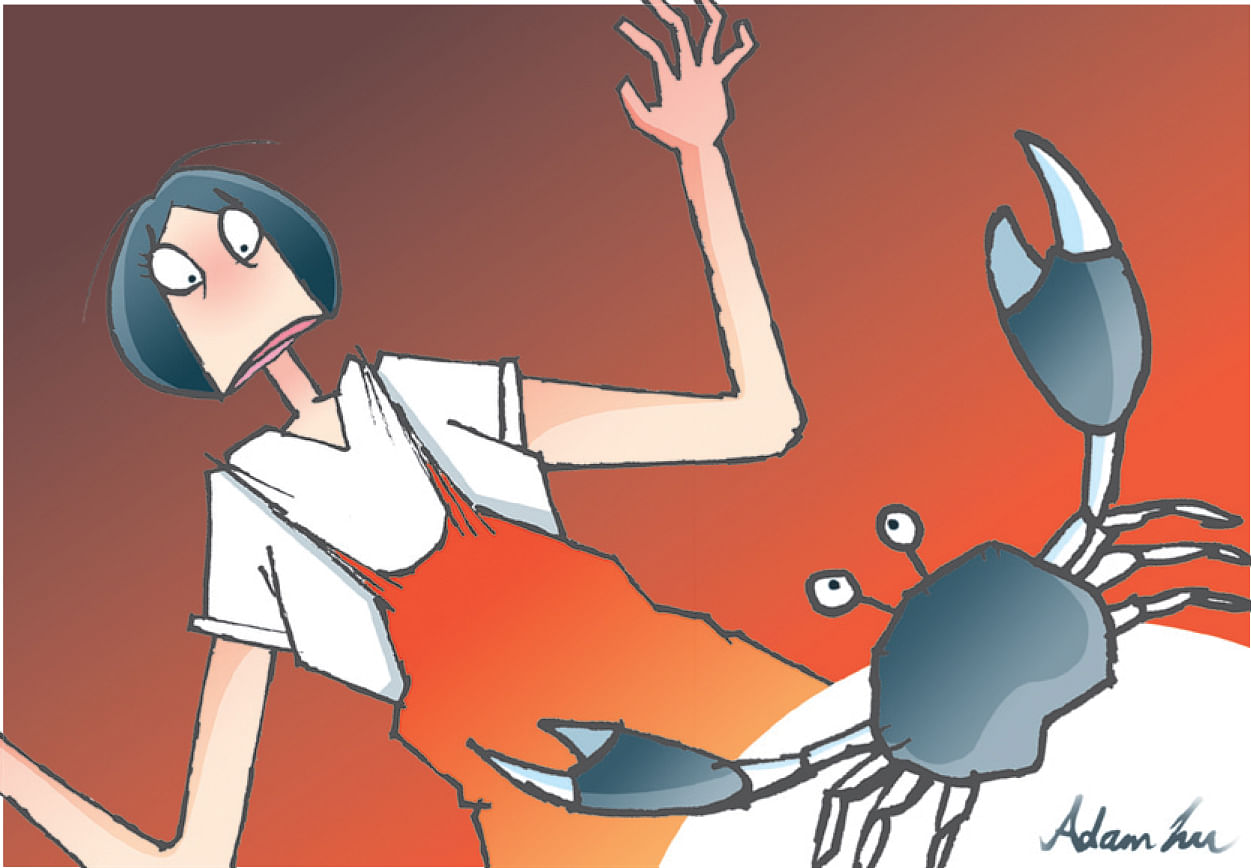We are going to catch our dinner tonight, I announced enthusiastically to my husband and a friend when we were down at the beach on the North Carolina coast two weeks ago.
I had a box of Prima chilli crab paste which I'd used before with lobster tails and lump crab meat, but if we wanted to have live crabs for dinner - well, we would have to catch them ourselves.
We didn't have a crab pot, but we could catch them with a line at the nearby creek, so we went to the public access area where other people would also go for those blue crabs.
I'd recently gone with my niece, so I knew how it was done. You impale the bait, usually a chicken neck, to a triangular hook and weight that is tied to a string, sling the contraption into the water and wait for a bite.
When the crab grabs the bait and starts eating it, you reel it in bit by tiny bit, so gently that it doesn't know it's going to its doom. And when it is right underneath you, still gobbling the chicken neck, you swoop swiftly into the water with a net and scoop it up.
It had seemed easy before, but that day, we were not having any luck. My husband caught a couple that were too small to eat. My friend was more interested in getting pictures for her Instagram feed than helping to put food on the table. I began to think about sending out for pizza.

Luckily for us, there were two other families on the dock who were netting specimens large enough to cook, but were there just for fun and happy to share their largesse with us. We had crabs for dinner after all.
That was the first hurdle. The next was how to kill them. I missed my mother, who is a dab hand at flipping over a big mud crab and stabbing it through the underside, right at the tip of the triangular flap.
Once, I remember, the crabs escaped from their basket and skittered over the kitchen floor into the living room, causing a commotion. Another time, a crab grabbed hold of her finger and wouldn't let go. My dad forced its pincer open with a chopstick while she bled.
I realised my mother was a tough woman. If you want to eat, you have no choice, I could hear her saying. But crab-killing skills are clearly not genetically transmitted and I couldn't bear the thought of watching the legs of the crab cycling wildly while it died.
If we lived in another time, I might have rung up my mum and asked her what to do. Instead, I consulted the hive mind. Some websites said to just dump them in boiling water. Others counselled putting them in the freezer first, so they would "go to sleep" before you put them in boiling water. Another advised stunning them by dunking them in ice-cold water for a few minutes and then putting them in boiling water. Most of them said to stab them the way mum did.
In any case, we all felt a little like murderers when we finally got our crabs into the pan. But I might tell you they were delicious and there was some novel satisfaction in knowing they had come out of the water just a few hours before - if not quite by our own efforts.
Still, it was a little chastening to realise what few skills I had for obtaining food if I could not go to the market and buy a neatly wrapped package.
All I know is how to cook and these days, you don't even need to buy your own ingredients to make dinner at home. We subscribe to a service which mails you the fixings for three meals each week. They arrive on your doorstep in an insulated box, along with the detailed recipes for how to use them.
Everything you need is sent and neatly apportioned in clear plastic bags. Just add oil and salt.
The dishes are usually delicious and span a gamut of cuisines, both Western and Asian. You choose the weeks you want meals delivered and the weeks you don't. You never have to think about what to cook, only if you feel like having chicken, pork or fish that night. For the busy modern person, it is hassle-free kitchen work. The recipes picture every step along the way, from start to finish. A friend calls it cooking by numbers.
Every time I unpack my box, however, I wonder about the person who devised the recipes and the people who cut up and packed the meat and vegetables to put in the mail, to send to someone they would never meet.
My purveyors are nameless and faceless and about as far as you can get from learning how to kill crab, wash pig's stomach or make cincalok from your mother.
I've watched my mum do all those things, but never learnt them and I feel a pang about that, now that she is so far away and the opportunity to glean her knowledge gets less.
It's not just the know-how that I am after. If that were the case - well, it turns out cat videos are just one of the two reasons the Internet was invented.
But maybe it's because information is so ubiquitous now that we hanker after authenticity. For me, the thought of losing my heritage because I've not taken the pains to learn it gives me pause.
Another reaction against the anonymous convenience of how we get our food today is the eating local movement. The flipside of our cooking by numbers box is the one I collect every week from our Karen farmers, full of sweet produce grown right on their farm, a few miles away.
In nearby Durham, a young man who owns an old-school butchery holds classes a couple of times a year on how to butcher a whole hog and that class is always full. People go, not because they want to ever cut up a pig, but because conscious eating - knowing what it means to kill an animal, something our forebears knew - is gaining prevalence once again.
You can eat with a conscience or cook by numbers. I guess I'm glad to be fortunate to have the choice. As my mother would say, if you want to eat...


